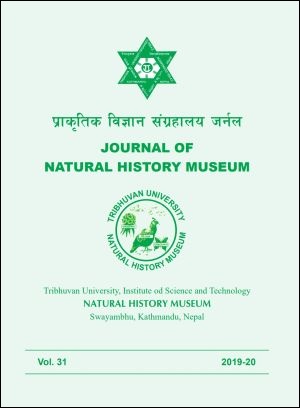Antioxidant Potentials of morel mushroom (Morchella conica Pers.) from Nepal
DOI:
https://doi.org/10.3126/jnhm.v31i1.39382Keywords:
anti-aging, DPPH, healthcare, NTFP, nutraceutical, oxidative stressAbstract
Oxidative stress contributes to the aging process and raises the risk of several chronic diseases. In recent years, natural antioxidants are being explored intensively for their ability to protect organisms and cells from oxidative stress-induced harm. Furthermore, mushrooms are widely used as a source of natural therapies for a variety of ailments caused by oxidative stress. In this study antioxidant activities of Morchella conica Pers. extracts obtained with methanol were investigated. This is supposed to be the first report of the antioxidant activity of morel mushroom from Nepal. Five complimentary test systems; namely DPPH free radical scavenging, total phenolic compounds, total flavonoid, ascorbic acid, and carotenoid concentration were used. At concentrations of 12.5, 25, 50, 100 and 200 μg/ml the methanol extracts scavenged 69, 69, 70, 68 and 81% DPPH radicals. The total phenolic content of the extracts was 4.304±0.12 mg/g gallic acid equivalent. The total flavonoid compound concentration was measured as 0.381±0.00 mg/g quercetin equivalent. The concentrations of ascorbic acid were recorded 19±0.02 mg/g dry sample. β-carotene and lycopene detected in the extract of M. conica are 0.020±0.001 and 0.021±0.002 μg/ml respectively. Finally, the findings of this study demonstrated that M. conica has a high antioxidant activity, making it potentially effective in antioxidant therapy and therapeutic intervention in oxidative stress-related disorders.

